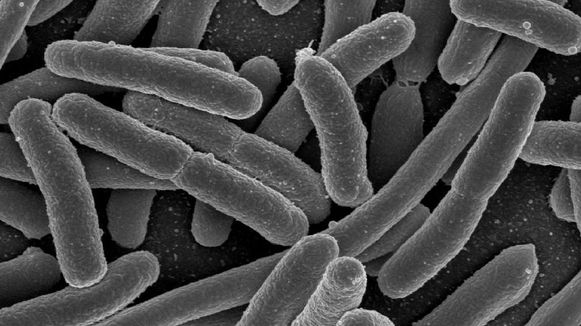When you are a parent, you have to answer the tough questions. Questions like, “how big would all of the germs in the world be if you had them all together?” This is what my daughter asked me yesterday and, like an idiot, I decided to find out.
Google was no help. Apparently this is not a popular question. I can tell you how many times around the planet all of the plastic bottles we use each year would go (around 150), but I cannot tell you from a quick internet search anyway, how big all of the germs in the world would be if we decided to put them all in one big pile.
The first step is to define “germ.” For now let’s say that a germ is a bacterium. Now, according to the University of Georgia’s study, there are currently around 5 x 10^30 bacteria floating in and around everything. That’s a 5 followed by 30 zeroes. That is 5 million trillion trillion. That’s 5,000,000,000,000,000,000,000,000,000,000. So, a lot.
Now that we know how many germs there are, we need to know how big they are. According to answers.com a germ is one thousandth of a millimeter, also called a micron or a micrometer. According to Yahoo, bacteria range in size from .5 microns to 5 microns. So I guess 1 micron is not a terrible guess, but maybe we should say 2 microns, just to be safe. E. coli is about 2 microns long, although viruses are smaller. Oh man, we forgot about viruses! There are at least 100 million of those (probably more) on Earth too! Viruses are about a tenth the size of bacteria, so let’s say, for ease of calculation, that 100 million viruses take up the same space as 10 million bacteria. We can just add those together to get our new total number of 5,000,000,000,000,000,000,000,010,000,000 germs at about 2 microns long each. So, laid end to end, all the germs in the world would be 10,000,000,000,000,000,000,000,020,000,000 microns long. And there you have it.
Oh dear. My daughter was not satisfied with that answer. Microns do not mean much to her. But a micron is just one thousandth of a millimeter, so we can take off a set of zeroes. And let’s take off two sets while we’re at it, and go right to meters. 10,000,000,000,000,000,000,000,020 meters long. That does seem like a lot. But we don’t want them long, we want them in a pile. So let’s squish them from longish things into cubes of 1x1x1 micron each. Now we are back to 5,000,000,000,000,000,000,000,010 meters, but if we are putting them in a square, we get a square that is 2,236,067,977,499.79 by 2,236,067,977,499.79 meters.
Hold on! We are in America! What is a meter? This makes no sense! How many miles is that? Well, it is 1,389,428,225.1 square miles. Yes, a billion and a half square miles. Good luck putting that in a pile, because the whole Earth is only about 197 million square miles. So yes, you could cover the planet almost a thousand times in germs. Luckily the germs are only a micron tall though, so a thousand microns, as we discussed earlier, is only a millimeter. So all the germs in the world put together would be enough to cover the planet, one millimeter thick. But no, the children are not satisfied yet! That is not a pile!
Let’s say that we want to pile the germs as high as the Empire State Building. The Empire State Building is 443 meters high to the tip of the spire, or 443,000 millimeters, or 443,000,000 microns. Now we can just divide our original pile of microns by 443,000,000 to see how many germs would go into each stack, and the answer is clearly 11,286,682,000,000,000,000,000, giving us stacks of 33,595,657.5 square meters each, or 20,875 square miles for the Americans. So basically you have a pile of germs roughly the size of West Virginia and as high as the Empire State Building. I hope that answers your question. And upon further reflection, I think another acceptable answer would have been ‘I don’t know.” Maybe I’ll remember to use that one next time…

